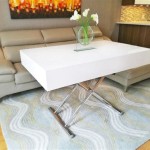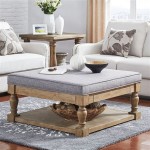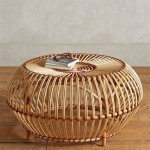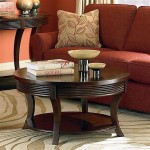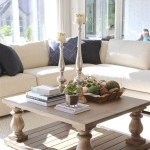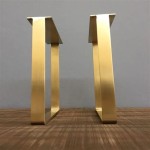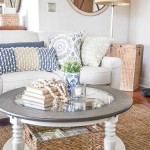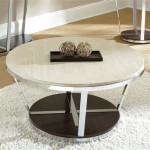Modern Center Table Design For Drawing Room
The modern center table serves as a focal point within the drawing room, significantly impacting the aesthetic appeal and functionality of the space. Selecting the right design necessitates careful consideration of several factors, including room size, existing décor, personal style, and intended use. Modern center tables often deviate from traditional forms, embracing minimalist principles, geometric shapes, and innovative materials.
The contemporary design landscape presents a diverse range of center table options, catering to a wide spectrum of preferences. From sleek glass-topped tables with metal frames to solid wood constructions, the selection process can be both exciting and challenging. A well-chosen center table not only enhances the visual harmony of the drawing room but also provides a practical surface for various activities, such as serving refreshments, displaying decorative objects, or holding reading materials.
Beyond aesthetics, functional aspects of the center table deserve attention. The height, shape, and storage capabilities contribute to the overall user experience. A table that is too high or too low can be uncomfortable, while an unsuitable shape may impede movement within the room. Integrated storage solutions, such as drawers or shelves, can help maintain a clutter-free environment.
Material Selection and its Impact
The choice of materials significantly influences the look and feel of a modern center table. Common materials include wood, glass, metal, and stone, each with its distinct characteristics and properties. Wood, for example, offers warmth and natural beauty, particularly in designs that highlight the grain and texture. Hardwoods like oak, walnut, and maple are durable and resistant to wear and tear, making them ideal for high-traffic areas.
Glass-topped tables offer a sense of lightness and transparency, visually expanding the space and allowing the underlying rug or flooring to be visible. Tempered glass is a popular choice due to its strength and resistance to shattering. The addition of a metal frame, often made of stainless steel or powder-coated steel, can provide structural support and introduce a contemporary edge.
Metal tables, either as frames or complete structures, exude a modern industrial vibe. The finish, whether polished, brushed, or matte, contributes to the overall aesthetic. Metal is known for its durability and resistance to moisture, making it suitable for various environments. However, it can feel cold to the touch, which may be a consideration in certain climates.
Stone, such as marble or granite, offers a luxurious and sophisticated touch. These materials are known for their unique veining patterns and natural beauty. However, stone tables can be heavy and require sturdy support. Additionally, they may be more susceptible to staining and require regular maintenance to preserve their appearance.
Shapes and Sizes – Optimizing Room Flow
The shape and size of the center table should complement the overall layout of the drawing room. Common shapes include rectangular, square, round, and oval, each with its own advantages and drawbacks. Rectangular tables are well-suited for elongated rooms, providing ample surface area for placing items. Square tables work well in symmetrical spaces, creating a balanced and harmonious look.
Round tables promote conversation and create a more intimate atmosphere. They are particularly useful in smaller spaces, as they allow for easier movement around the table. Oval tables offer a similar aesthetic to round tables but provide slightly more surface area. The choice of shape should also consider the placement of other furniture, such as sofas and chairs.
The size of the center table should be proportional to the size of the drawing room. A table that is too large can overwhelm the space, making it feel cramped and cluttered. Conversely, a table that is too small may appear insignificant and fail to serve its intended purpose. As a general rule, the center table should be approximately two-thirds the length of the sofa. The height should be similar to the seat height of the surrounding chairs or sofa, allowing for comfortable reach.
Consider the pathways around the table, ensuring that there is sufficient space for people to move freely. A good rule of thumb is to maintain a minimum of 18 inches between the table and other furniture pieces. This will prevent obstructions and create a more comfortable and functional living space.
Storage Solutions and Practical Considerations
Modern center tables increasingly incorporate storage solutions to address the need for organization and clutter control. Integrated drawers, shelves, and hidden compartments provide convenient spaces for storing remote controls, magazines, books, and other everyday items. This feature is particularly valuable in smaller living rooms where space is at a premium.
Drawers can be discreetly integrated into the design, providing hidden storage without compromising the aesthetic appeal. Shelves offer open storage, allowing for the display of decorative objects or the storage of books. Lift-top tables are another popular option, providing a versatile surface that can be raised for dining or working. These tables often include storage compartments underneath the lift-top mechanism.
When selecting a center table with storage, consider the type of items you intend to store and the accessibility of the storage compartments. Drawers should glide smoothly and close securely. Shelves should be sturdy and capable of supporting the weight of the items placed on them. The overall design should be functional and user-friendly.
Beyond storage, consider the ease of maintenance and cleaning. Glass-topped tables require regular cleaning to remove fingerprints and smudges. Wooden tables may require occasional polishing to maintain their luster. Stone tables may require sealing to prevent staining. Choose a material that is easy to care for and suits your lifestyle.
The placement of electrical outlets should also be considered. If you plan to use the center table for charging electronic devices, ensure that it is located near an outlet or consider incorporating a table with built-in USB ports. This will eliminate the need for unsightly extension cords and create a more streamlined look.
Ultimately, the ideal modern center table design for a drawing room balances aesthetic appeal with practical functionality. Considering the material, shape, size, storage capabilities, and maintenance requirements will lead to a selection that enhances the overall living experience.
Thoughtful planning and careful consideration will ensure the center table seamlessly integrates into the drawing room, serving as a stylish and functional centerpiece for years to come.

290 Best Centre Table Design Ideas Center Living Room

50 Modern Center Tables For A Luxury Living Room

Centre Table For Living Room In Low Get Upto 65 Off

Modern Center Tables You Need To Add Your Interior Design

200 Living Room Center Table Designs Catalogue Images Modern Coffee Design Inspiration Ideas

35 Best Space Saving Center Table Design For Drawing Room Stylish Wood Interior Coffee

44 Stunning Centre Table Designs For Your Living Room

Top 10 Choices On Modern Center Tables For Your Living Room

Osal Modern Trendy Nesting Coffee Table

S Page 100 Modern Space Living
Related Posts

